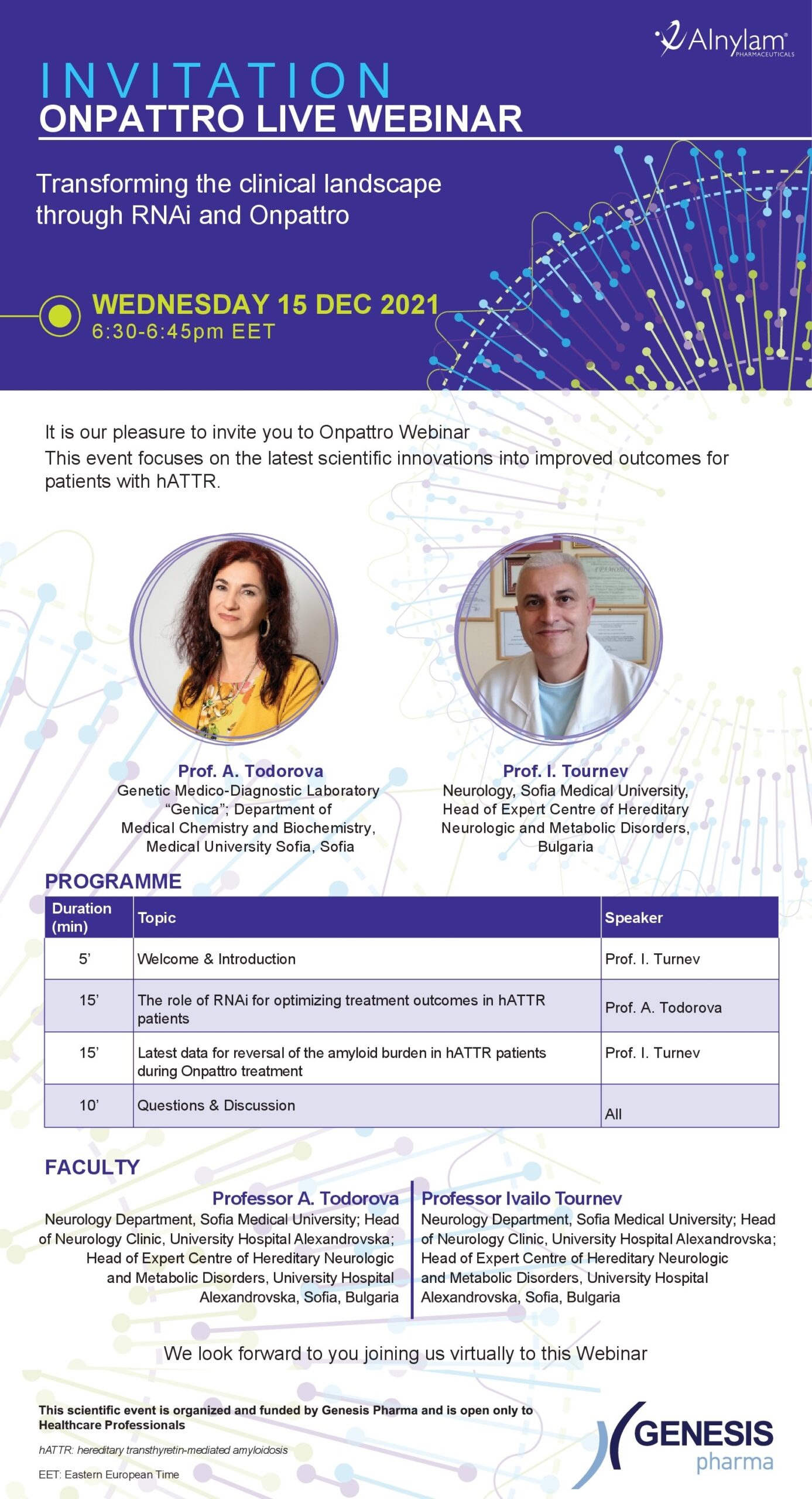Featured posts
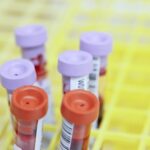 Porphyria cutanea tarda is a rare disease, resulting from low activity of the enzyme uroporphyrinogen decarboxylase. It takes part in the stepwise process of haem of hemoglobin synthesis. The result is overproduction of porphyrins and their precursors that accumulate in the blood, skin and the liver. Potential trigger factors are chronic hepatitis C, HIV infection, alcohol, estrogen-containing drugs and smoking.
Porphyria cutanea tarda is a rare disease, resulting from low activity of the enzyme uroporphyrinogen decarboxylase. It takes part in the stepwise process of haem of hemoglobin synthesis. The result is overproduction of porphyrins and their precursors that accumulate in the blood, skin and the liver. Potential trigger factors are chronic hepatitis C, HIV infection, alcohol, estrogen-containing drugs and smoking.
We present a clinical case of a 63-year-old male with chronic viral C hepatitis, liver cirrhosis and porphyria cutanea tarda. The clinical presentation included painful, blistering lesions on the sun exposed skin areas. A three-month course with direct acting antivirals was performed which sustained virological response, negative HCV RNA, full remission of the skin disease with no side effects.
Read the full article here.
 Dear ladies and gentlemen,
Dear ladies and gentlemen,
On behalf of the Scientific Program Committee, we would like to invite you to be part of the ICPP 2022 – Intеrnational Congress on Porphyrins and Porphyrias, which will be held on 4-7 September 2022 in Sofia, Bulgaria.
In addition to the scientific program there will be two special events to note: the pre-congress regional workshop and the Patient day. The goal of the pre-congress regional workshop is for diagnostic laboratories to provide improved guidance to physicians in order to allow them to order the proper biochemical and genetic diagnostic tests for the different types of porphyria. The second event of note will be our Patient Day. It will provide a full day of talks and sessions with a difference! Our aim for the Patient Day is to focus on the people and the community, and we look forward to everyone joining us.
You can find more information about the upcoming event here.
We look forward to seeing you in Sofia!
Aneta Ivanova, President of ICPP 2022
Peter Meissner, Chair Scientific Program Committee
Sverre Sandberg, EPNET president
Clinical course in two children with Juvenile Paget’s disease during long-term treatment with intravenous bisphosphonates
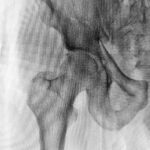 Juvenile Paget disease (JPD) is an ultra-rare disease, characterized by loss of function of osteoprotegerin. Osteoprotegerin inhibits osteoclast activation via the receptor activator of nuclear factor κB (RANK) pathway. Severely affected children suffer from bone deformities and pain and require long term anti-resorptive treatment. Due to the rarity of the disease, few long-term follow-up data on the clinical course in children are available. In this report, motor development during infancy and early childhood and the activity of the bone disease based on clinical, radiographic and biochemical parameters are reported in 2 children with severe forms of JPD during long term treatment (4 and 14 years) with bisphosphonates. Results of a bone biopsy in patient 1 after 10 years of treatment and video material of the motor development of patient 2 are provided. Doses per year of pamidronate ranged from 4 to 9 mg/kg bodyweight and were administered in 4-10 courses, yearly. Treatment was adjusted individually according to the presence of bone pain. Motor development was delayed in both children before treatment with bisphosphonates was commenced and improved thereafter. Bone histology revealed a significantly higher heterogeneity of mineralization which was mainly attributed to the increased percentage of low mineralized bone areas. Individualized intravenous treatment with pamidronate resulted in sufficient control of bone pain and suppression of bone turnover with few side effects over the observation period.
Juvenile Paget disease (JPD) is an ultra-rare disease, characterized by loss of function of osteoprotegerin. Osteoprotegerin inhibits osteoclast activation via the receptor activator of nuclear factor κB (RANK) pathway. Severely affected children suffer from bone deformities and pain and require long term anti-resorptive treatment. Due to the rarity of the disease, few long-term follow-up data on the clinical course in children are available. In this report, motor development during infancy and early childhood and the activity of the bone disease based on clinical, radiographic and biochemical parameters are reported in 2 children with severe forms of JPD during long term treatment (4 and 14 years) with bisphosphonates. Results of a bone biopsy in patient 1 after 10 years of treatment and video material of the motor development of patient 2 are provided. Doses per year of pamidronate ranged from 4 to 9 mg/kg bodyweight and were administered in 4-10 courses, yearly. Treatment was adjusted individually according to the presence of bone pain. Motor development was delayed in both children before treatment with bisphosphonates was commenced and improved thereafter. Bone histology revealed a significantly higher heterogeneity of mineralization which was mainly attributed to the increased percentage of low mineralized bone areas. Individualized intravenous treatment with pamidronate resulted in sufficient control of bone pain and suppression of bone turnover with few side effects over the observation period.
Read the full article here.
First-ever United Nations Resolution to Increase Visibility for the 300 Million Persons Living with a Rare Disease
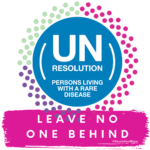 A global grassroots campaign led by persons living with a rare disease and their families has succeeded in securing the adoption of the first-ever UN Resolution on “Addressing the Challenges of Persons Living with a Rare Disease and their Families.”
A global grassroots campaign led by persons living with a rare disease and their families has succeeded in securing the adoption of the first-ever UN Resolution on “Addressing the Challenges of Persons Living with a Rare Disease and their Families.”
BRUSSELS, Belgium and NEW YORK, Dec. 16, 2021 (GLOBE NEWSWIRE) — Rare Diseases International (RDI), the NGO Committee for Rare Diseases, and EURORDIS-Rare Diseases Europe announced today that the UN General Assembly formally adopted a resolution recognising the over 300 million Persons Living with a Rare Disease (PLWRD) worldwide and their families.
The Resolution focuses on the importance of non-discrimination and advances key pillars of the UN Sustainable Development Goals (SDGs), including access to education and decent work, reducing poverty, tackling gender inequality, and supporting participation in society.
Adopted by consensus by the 193 UN Member States. More information here.
620 newly approved members to join the existing European Reference Networks (ERNs) from 1 January 2022
 On 1 January 2022, 620 new members will join the European Reference Networks, as unanimously approved by the ERN Board of Member States. As a result of the current call there will be nearly 1,500 ERN units in 27 Member States and Norway. This milestone enlargement extends the geographical scope of the ERNs, and the possibility of patients with rare and low prevalence as well as complex diseases and conditions to access highly specialised healthcare.
On 1 January 2022, 620 new members will join the European Reference Networks, as unanimously approved by the ERN Board of Member States. As a result of the current call there will be nearly 1,500 ERN units in 27 Member States and Norway. This milestone enlargement extends the geographical scope of the ERNs, and the possibility of patients with rare and low prevalence as well as complex diseases and conditions to access highly specialised healthcare.
The new 620 healthcare units will join the Networks in 24 EU Member States and Norway (except Bulgaria, Malta and Luxembourg). The highest number of new applicants – 43 – have been accepted to ERN RITA – the European Reference Network that aims to improve the care of patients with Rare Immunological Disorders. 38 new applicants will join EURACAN – the ERN that connects patients who have rare adult solid cancers, and 36 applicants will join ERN EuroBloodNet – the ERN in Rare Hematological Diseases (RHD). The highest number of healthcare units is going to join the ERNs in Italy (145), Germany (84) and Spain (68), and the lowest in Latvia and Slovenia (4), Estonia (3) and Cyprus (2). Greece joins as a new country to have healthcare units in the ERNs – with 18 units.
The ERNs system is an innovative model of virtual healthcare and collaboration. It successfully brings together the most specialised centres (now nearly 1,500 healthcare units) across the EU to speed up diagnosis, improve standards of care and generate knowledge and new evidence for patients living with rare or low prevalence and complex diseases, working according to the principle that it should be knowledge that travels, not the patient.
In 2017, when the ERNs were established, nearly 900 healthcare units joined 24 European Reference Networks.
More information: Overview | Public Health (europa.eu)
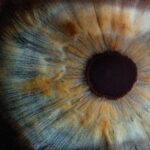 Objective: To present an algorithm, including in-depth clinical, electrophysiological and genetic studies, thanks to which a correct diagnosis of patients with Stargardt disease and cone-rod dystrophy was established.Material and methods: We present two patients who underwent a full ophthalmological examination, optical coherence tomography, fundus autofluorescence and/or fluorescein angiography, visual field testing and fullfield and multifocal electroretinography and the clinical diagnosis was established, confirmed and genetically.Results: Some of the symptoms of the patient with cone-rod dystrophy, as well as some of the clinical studies could be misinterpreted as Stargardt disease, but after in-depth electrophysiological studies demonstrated reduced diffuse electrophysiological activity of cones and to a lesser extent of rods, a revision of the initial clinical diagnosis was required, confirmed later genetically.Conclusion: In-depth clinical, electrophysiological and genetic testing of patients with hereditary retinal dystrophies is essential for the correct diagnosis and choice of therapeutic approach. The presented algorithm is useful for differential diagnosis between the different types of hereditary retinal dystrophies, which is very difficult in some cases and requires a differentiated approach. Read the full article here.
Objective: To present an algorithm, including in-depth clinical, electrophysiological and genetic studies, thanks to which a correct diagnosis of patients with Stargardt disease and cone-rod dystrophy was established.Material and methods: We present two patients who underwent a full ophthalmological examination, optical coherence tomography, fundus autofluorescence and/or fluorescein angiography, visual field testing and fullfield and multifocal electroretinography and the clinical diagnosis was established, confirmed and genetically.Results: Some of the symptoms of the patient with cone-rod dystrophy, as well as some of the clinical studies could be misinterpreted as Stargardt disease, but after in-depth electrophysiological studies demonstrated reduced diffuse electrophysiological activity of cones and to a lesser extent of rods, a revision of the initial clinical diagnosis was required, confirmed later genetically.Conclusion: In-depth clinical, electrophysiological and genetic testing of patients with hereditary retinal dystrophies is essential for the correct diagnosis and choice of therapeutic approach. The presented algorithm is useful for differential diagnosis between the different types of hereditary retinal dystrophies, which is very difficult in some cases and requires a differentiated approach. Read the full article here.
 Duchenne muscular dystrophy (DMD) is a genetic, progressive neuromuscular condition that is marked by long-term muscle deterioration with significant implications of pulmonary and cardiac dysfunction. As such, end-stage heart failure (HF) in DMD is increasingly becoming the main cause of death in this population. The early detection of cardiomyopathy is often challenging, due to a long subclinical phase of ventricular dysfunction and difficulties in assessment of cardiovascular symptomatology in these patients who usually lose ambulation during the early adolescence. However, an early diagnosis of cardiovascular disease in patients with DMD is decisive since it allows a timely initiation of cardioprotective therapies that can mitigate HF symptoms and delay detrimental heart muscle remodelling. Regular cardiac care is crucial in DMD care. Early recognition and prophylactic use of angiotensin converting enzyme inhibitors (ACEi) are the main stay therapeutic strategy to delay incidence of DMD – dilatated cardiomyopathy (DCM). Because of lack of DMD specific drugs, actual indications for established DCM include current treatment for heart failure (HF).
Duchenne muscular dystrophy (DMD) is a genetic, progressive neuromuscular condition that is marked by long-term muscle deterioration with significant implications of pulmonary and cardiac dysfunction. As such, end-stage heart failure (HF) in DMD is increasingly becoming the main cause of death in this population. The early detection of cardiomyopathy is often challenging, due to a long subclinical phase of ventricular dysfunction and difficulties in assessment of cardiovascular symptomatology in these patients who usually lose ambulation during the early adolescence. However, an early diagnosis of cardiovascular disease in patients with DMD is decisive since it allows a timely initiation of cardioprotective therapies that can mitigate HF symptoms and delay detrimental heart muscle remodelling. Regular cardiac care is crucial in DMD care. Early recognition and prophylactic use of angiotensin converting enzyme inhibitors (ACEi) are the main stay therapeutic strategy to delay incidence of DMD – dilatated cardiomyopathy (DCM). Because of lack of DMD specific drugs, actual indications for established DCM include current treatment for heart failure (HF).
We present this rare and interesting case to highlight the existence of this entity since it carries a poor prognosis and requires a timely cardioprotective therapy. Read the full article here.
 Takeda and Institure for Rade Diseases will conduct a specialised online webinar on “Gaucher disease”
Takeda and Institure for Rade Diseases will conduct a specialised online webinar on “Gaucher disease”
Date: 9 Decembre 2021
Time: 18:00 EET
Venue: Virtual Congress Venue, Institute for Rare Diseases
For more information and free registration, go to vcv.raredis.org .

